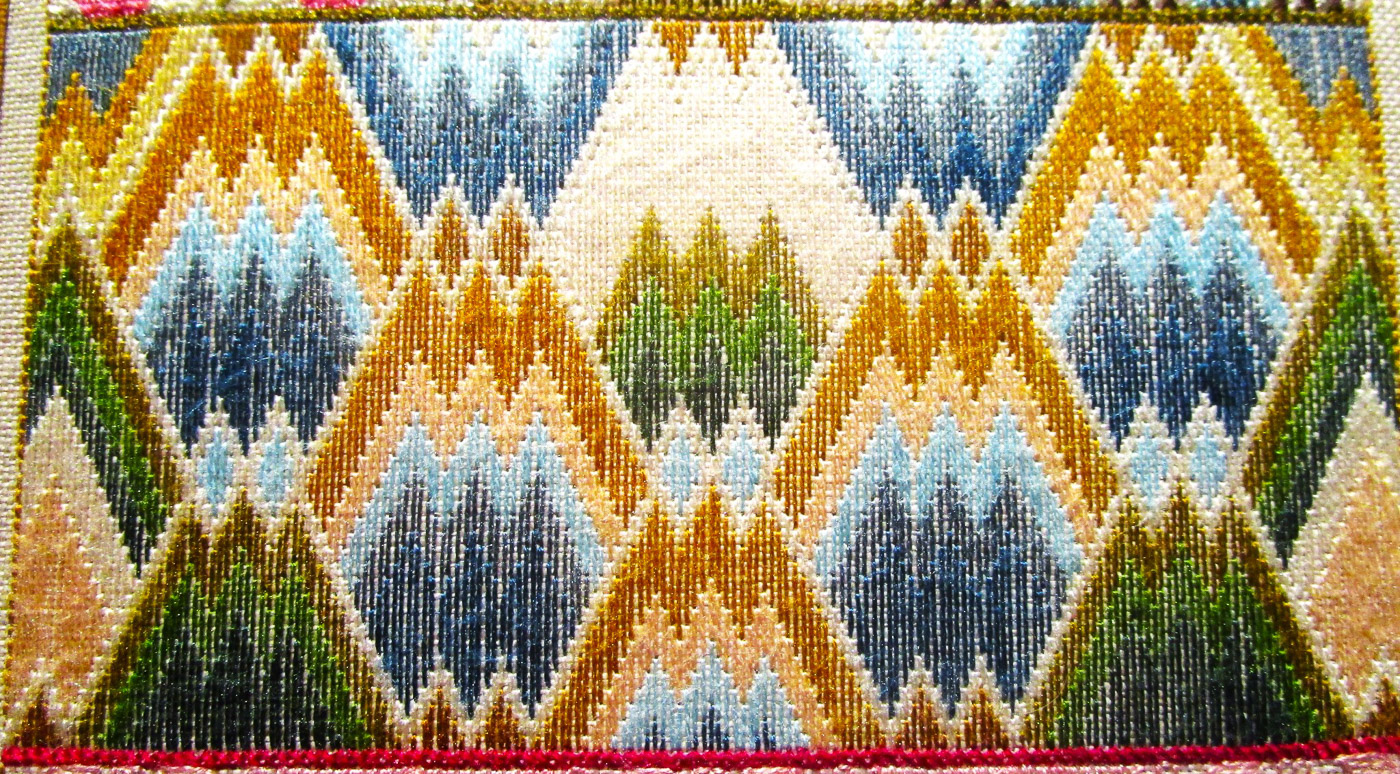Description
RACHEL JARRATT circa 1760
A sampler from the collection of the Fitzwilliam Museum in Cambridge, England
Skill and expertise in sampler-making did not necessarily peak in the mid-to-late seventeenth century and then wane during what is often called the “golden age” of English sampler-making. These skills and techniques survived and reemerged in samplers to the present day. This reproduction is a perfect example of skills transcending the centuries. It was a reproduction of sorts when it was first created. At first glance, it appears to have been made in the seventeenth century with its long, narrow shape and variety of stitches, but on closer inspection, one can detect some elements of later techniques. The floral and geometric pattern bands are not as intensely stitched are a bit broader and bolder and more open. It is a bit too studied and balanced (earlier band samplers were not necessarily intended for display, more as pattern records; hence, the patterns were not always symmetrical.) This sampler might have been made to be framed and displayed. The date, of course, is the giveaway. It was made in the 1760s, perhaps under the tutelage of a teacher who researched earlier samplers, admired the work, and inspired this respect and admiration in her pupil, Rachel Jarratt.
At the center is a peculiar variation of Adam and Eve, only instead of those familiar figures we have two “boxers” in their traditional pugnacious stance. Another interesting variation on a theme is the geometric counted satin stitched area toward the bottom- a traditional whitework design only here it has been executed in pink. Stitches used in the sampler include cross, counted thread satin, stem filling, detached buttonhole, double running, queen, bullion knots, and Florentine (bargello). The original sampler included a section of cut and drawn work and hollie point, which has not been reproduced.
The finished reproduction stitched on 32 count linen will measure approximately 6″ x 27-1/2″, and is recommended for more advanced needleworkers. It has been printed in a full color twenty page booklet.
Additional information
| Format Options |
|---|













